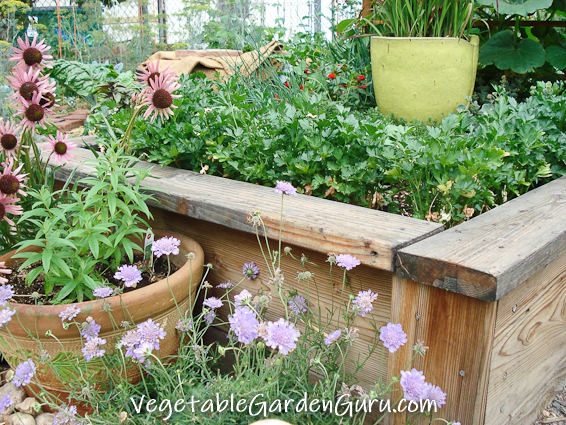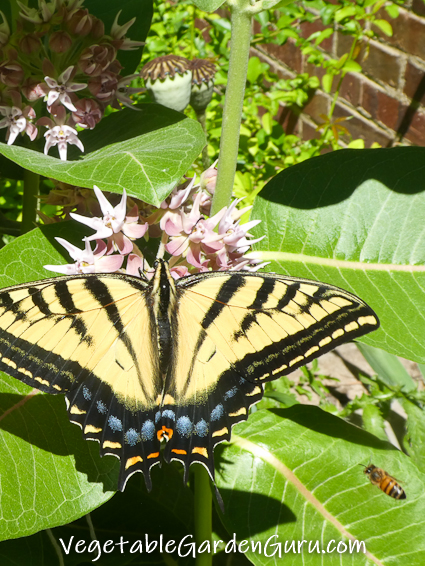| Back to Back Issues Page |
 |
|
Under the Arbor, Issue 14 March 17, 2021 |
March 2021 Issue 14In this issue:
~ Raised Bed Construction Tips ~
~ Deep Roots + Good Soil Ecology = Deep Nutrition ~ ~ Pollinators ~
Raised Bed Construction TipsWooden raised beds are beautiful, tidy, and easy on the back, but they do have a few drawbacks. While they are relatively easy to build, I have some very important raised bed construction tips that can help you build more durable raised beds that will have a longer lifespan.Construction Tip #1 Because of the weight of all the soil, water and plants on the inside, the corners of your raised bed will be under tremendous pressure and will have a tendency to blow out. So you have to build REALLY strong corners. Here's how: The cells that make up wood fibers are very long, and grow vertically on the tree. (Do try this at home…) Hold a bunch of dry spaghetti vertically - that's what wood fibers look like when magnified. If you put a construction screw into the side of the bundle and then try to pull it out, you'll see that the screw does have some grip. But if you place the screw into the end of the bundle and try to remove it, you'll notice it has no grip at all and pulls right out. This is a demonstration of why wood screws don't hold well in end grain, and why you can't just screw the face of one board into the end of another. Cut 4 pieces of 2x4 (or 4x4) each as long as the boards are wide, and put one vertically inside each corner. Then screw both sides into it. (The bed in the photo above also has and inside corner board.) Construction Tips #2 & 3 #2: Wood that is wet on one side and dry on the other will warp, because the wet side will swell and the dry side won't, making it cup toward the outside. Any "waterproofing" finish you can find will either be toxic (like deck seal), be edible to microbes (like beeswax or raw oil), or be not very durable. The solution to this is the same as #3 below. #3: No matter what species of wood you use (yes, even cedar) wood will decay over time. And the healthier and more alive your soil is, the faster the wood in your raised bed will decompose, as it gets eaten by the fungi. The fungi are just doing their job, which is to recycle nutrients contained in wood and feed them to plant roots. The raised bed itself becomes a "hugelkultur". (If you haven't heard of hugelkultur yet, stay tuned for next month's newsletter...) The solution to both these challenges is the same: make the insides the outsides! Unscrew the corners, flip all four sides over, and bolt them back together. You might need to replace the corner 2x4s. And depending on your soil structure, you may have to shovel a bit of soil that crumbles away from the edges back into the bed. I've done this and it's not as bad as it sounds. It will double the life of your beds, and will turn them into an interesting art/conversation piece: 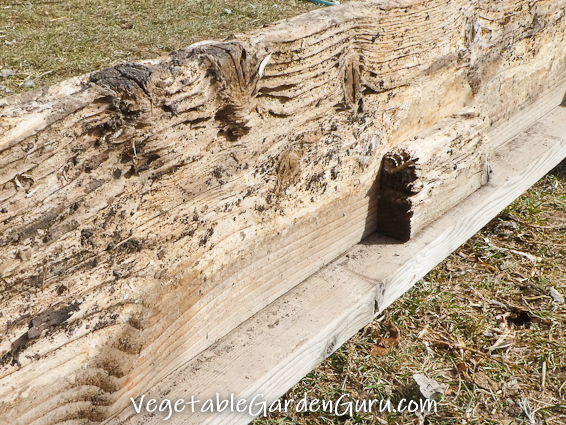
For more raised bed garden construction tips, you can visit the whole Raised Bed Construction article. Deep Roots + Good Soil Ecology = Deep NutritionThere is an awful lot of fun and interesting stuff on the internet about container gardening, wall gardening, pocket gardening, tower gardening, rain-gutters-on-a-stand gardening, etc. It's all good, it just depends on what you're going for.I grow a food garden because the nutrition in supermarket produce has been steadily declining for more than 50 years, and our health as a species has declined in lockstep with the decline in nutrition. To put nutrition into plants, you must have nutrients in your soil, and your plants must have a healthy, fully-functioning symbiotic relationship with the microbes and fungi that are the ecosystem of that soil. The microbes and fungi literally gather up and serve those nutrients to your plants on demand, in exchange for sugars that the plant alone can make through photosynthesis. Don't get me wrong… I have nothing against containers, raised beds, wall or pallet gardens, because I think that any relationship we make with living plants benefits us in so many ways. And of course not everyone is blessed to have access to a patch of earth big enough to grow things in. But for people who do garden in the earth - if nutritous food is your goal then watering with the blue stuff keeps plants alive but does not make them healthy, healthful or flavorful. Plants need deep roots, enough minerals in the soil and a living soil ecosystem to deliver deep nutrition. In 1927, University of Nebraska researcher John Weaver studied the root development of vegetable crops by painstakingly excavating and mapping the extent of their root systems. Roots in an undisturbed ecosystem go MUCH deeper than the bit of space we often give them, but the deeper and wider we allow the roots to grow, the more nutrition they can extract, given a healthy soil ecosystem. Here's one of Weaver's drawings of a beet root, where each square represents one foot. Note that the roots are 8 feet wide and 10 feet deep at
14 weeks of age. The beet we eat is the little blob just under the soil surface at the top:
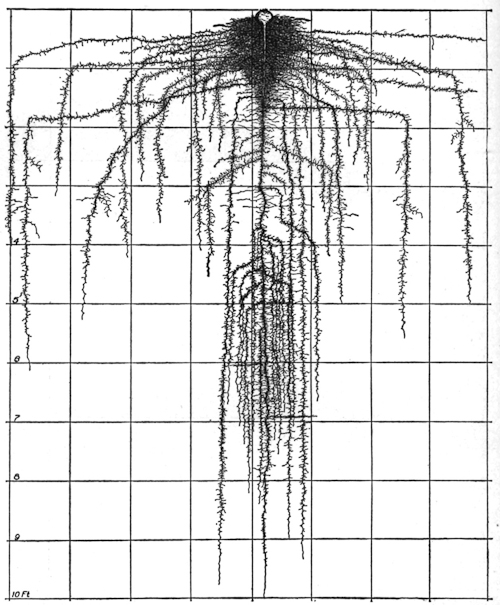
PollinatorsBesides nutrient-dense vegetable gardening, I have a deep love for pollinators of all kinds. Their beauty, life cycles, interactions and critical position in many ecosystems gives them a big place in my heart and my gardens. Rather than write about them here, I'll send you over to my latest article on Pollinators, and just leave you will a few photos of the friends who visited me last year - despite the pandemic. Here's a link to my new article on Pollinators.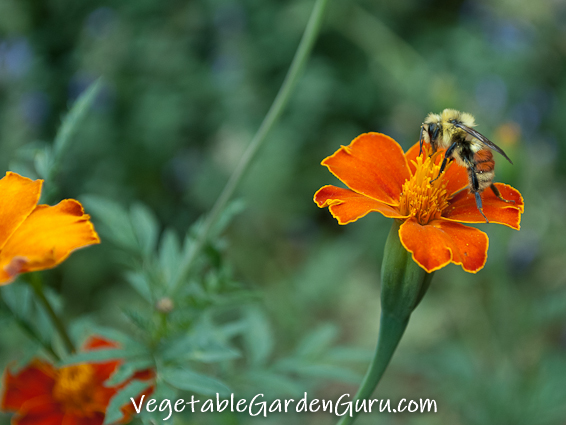
Hunt's Bumblebee on a French Marigold
Swallowtail on Milkweed, with a Honeybee on Final Approach |
| Back to Back Issues Page |
